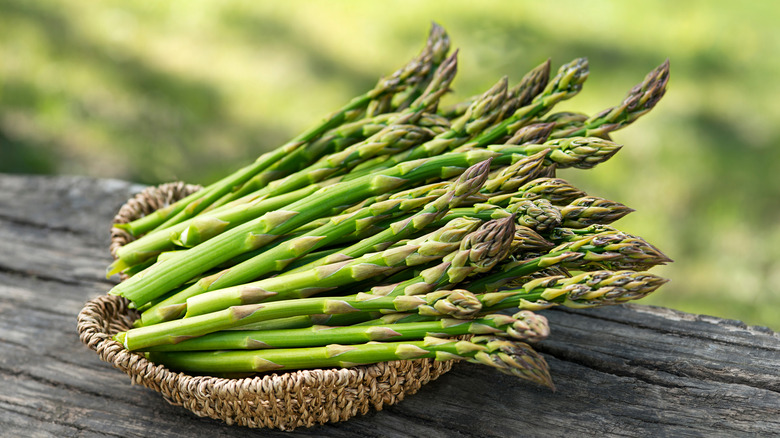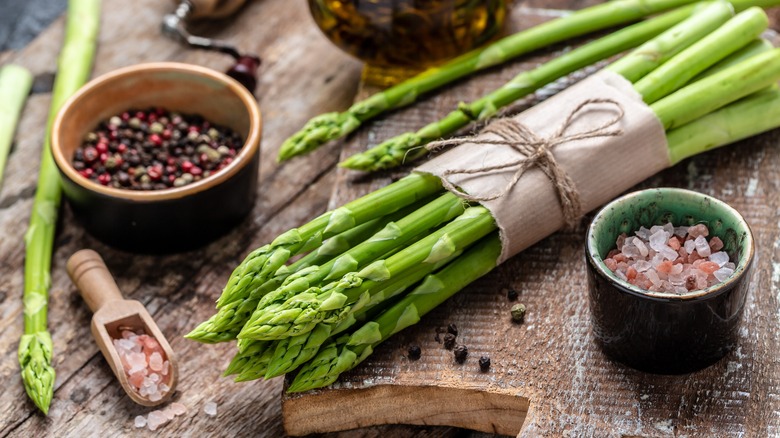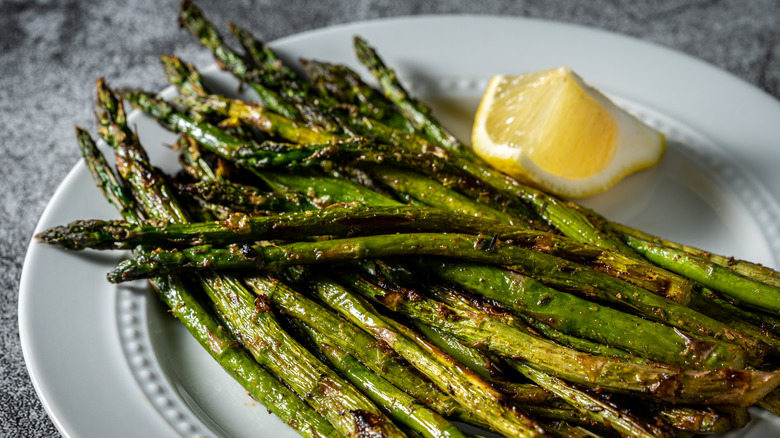Dry-Charring Is The Best Method For Cooking Asparagus. Here's Why
Asparagus is one of those vegetables that people either really love or really hate, and if you fall in the latter category, you may want to give this green veggie another shot. This nutrient-dense vegetable offers a variety of health benefits, such as being a great source of vitamins A, C, E, K, and B vitamins, as well as potassium, calcium, and iron, according to Healthline. Asparagus is low in calories, high in fiber, and promotes healthy digestion. It has also been shown to help with heart and brain health.
With this food being so great for your health, why would more people not incorporate it into their diets? It could be in the way it's cooked. Asparagus, like most vegetables, can be cooked in a variety of ways, including grilling, roasting, sautéing, and steaming, but Serious Eats says there's one more way that you probably haven't tried cooking this veggie — dry-charring.
What is dry charring?
According to chef and recipe creator Sasha Marx, the dry charring method is fast and uses less fat than many other methods of cooking vegetables (via Serious Eats). This is because it's done "dry," meaning you don't add oils or butter to the vegetables or pan as you cook. What you get with this type of cooking is a crispy, tender texture and full asparagus flavor with a slightly smoky aftertaste. It works great with other vegetables, as well, like carrots and green beans.
Per lifehacker, to char vegetables in this manner, you simply place them directly on a pan and cook them on the stovetop, with no butter or oil. By skipping the fat, your cooking pan will get very hot without smoking, so the vegetables become charred, not steamed or smoked, as they cook. Of course, you will want to avoid an open flame so that you don't risk burning the vegetables — or your pan.
Dry charring asparagus
You will want to let the asparagus sit in the pan — don't move them around. Allowing them to get hot on one side will aid in them being charred. Once the asparagus begins to sweat, flip it over and let it cook on the other side in the same manner. Once it's cooked, take it off the stove. You will want to use tongs to flip the asparagus, because a spatula may not help you flip them properly.
After the asparagus has cooked, you can add seasonings, like salt, pepper, and lemon juice, to help flavor them. Cooking asparagus in this manner helps you cook them faster, easier, and with less mess (no fats means no splatter). This is also a great way to expand your cooking skills and try new methods, especially because it results in more of a crispy outer texture and tender inner texture that works well with all sorts of vegetables.


